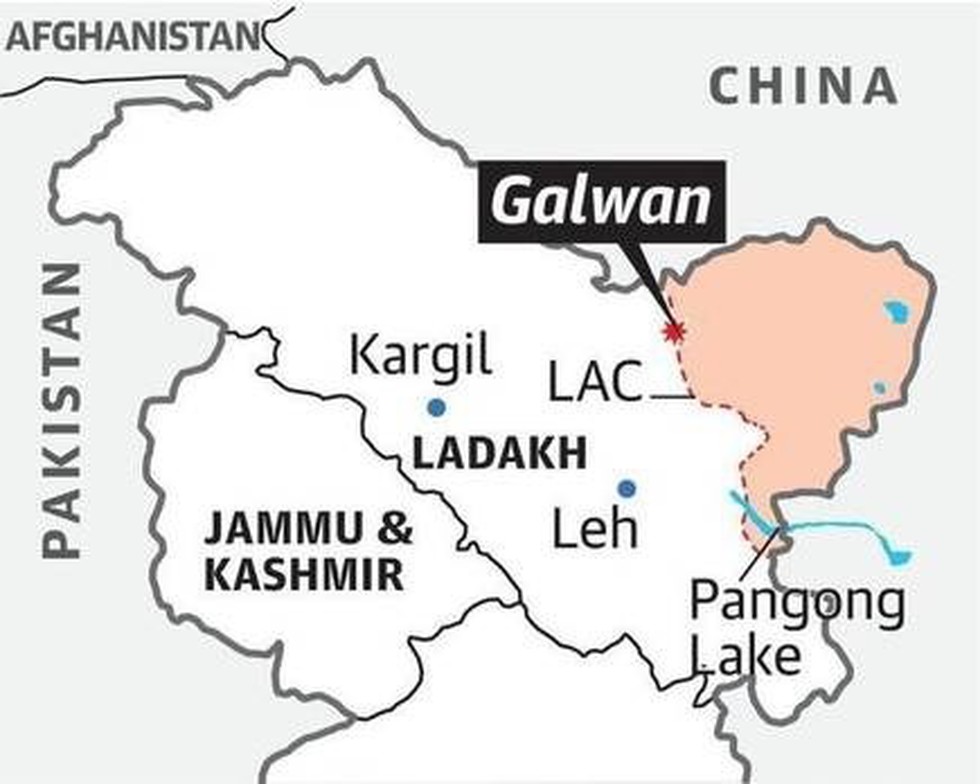
Amna Nisar Abbasi | amnanisarabbasi@gmail.com
She is working as a Research Officer at the Institute of Regional Studies Islamabad Pakistan.
 World’s two most densely-populated nation’s armies are locked in an overwrought stand-off in the Himalayas. The ongoing armed tension is not only restricted to Ladakh; defense forces of both states are eyeball-to-eyeball at Nathu La; a border area between Sikkim north-eastern state of India and China. China and India share a border approximately 3,440km long and have overlapping territorial claims. (Siddique, 2020). In 2020 the confrontation was reported on two occasions in Ladakh at three locations: Hot Spring, the Galwan valley, and to the south Pangong Lake, and one time in 2021 at Nathu La in Sikkim. Their border forces frequently smack on each other, resulting in sporadic scuffles, but both countries agreed on a ceasefire for the last four decades.
World’s two most densely-populated nation’s armies are locked in an overwrought stand-off in the Himalayas. The ongoing armed tension is not only restricted to Ladakh; defense forces of both states are eyeball-to-eyeball at Nathu La; a border area between Sikkim north-eastern state of India and China. China and India share a border approximately 3,440km long and have overlapping territorial claims. (Siddique, 2020). In 2020 the confrontation was reported on two occasions in Ladakh at three locations: Hot Spring, the Galwan valley, and to the south Pangong Lake, and one time in 2021 at Nathu La in Sikkim. Their border forces frequently smack on each other, resulting in sporadic scuffles, but both countries agreed on a ceasefire for the last four decades.
Since the 1962 Sino-Indian War, China and India have had frequent stand-offs along the Line of Actual Control (LAC). After this bruising border war, decades passed and concluded three diplomatic agreements were signed between 1993 and 2013 to manage the unresolved border. Those agreements were operationally helpful because they offered a strategy for preserving “peace and serenity” on the borders and politically important as well because they allowed both growing powers to place their disputes on the table, whether it is based on territorial issues or other and ensue with building and broadening political and economic relationship. But after the recent military confrontation, any diplomatic engagements will probably be complicated in the near future as India is highly under distrust, and if both nations find enough options through both can engage themselves in an agreement; Indian’s will probably require additional promises.
Indian’s claimed that in early May 2020, Chinese forces dug trenches, placed tents, and moved heavy apparatus inside several miles in proclaimed Indian Territory, and thousands of Chinese troops have deployed into the Galwan valley in Ladakh, which is not a routine incursion. (Ethirajan, & Pandey, 2020). Ajai Shukla, an Indian military expert, said that; “the situation is grave; Chinese have come into terrain which they already accepted as a part of India. This has entirely changed the status-quo”. (Ethirajan & Pandey, 2020). The move came after when India built several hundred-mile-long roads connecting to a sophisticated airbase that was reactivated in 2008. Differences are not limited to only one factor; they have been growing in the past years over other policy domains, when India redrew the region’s map and controversially decided to limit the self-sufficiency of Indian occupied Jammu and Kashmir in August 2019. On the other side, the Indian encroachment of Nepal’s territory is not hidden by building a road connecting with China, that Nepalese claims are their territory by presenting their map in parliament. India has forced encroachment into the Galwan valley through they are changing the whole picture along the LAC that has annoyed the Chinese. Chinese media outlet Global Times categorically said; “The Galwan Valley region is Chinese territory, and the local border control situations were very clear. The actions by the Indian side have seriously violated China and India’s agreements on border issues, violated China’s territorial sovereignty and harmed military relations between the two countries” (Global times, 2020).
The stand-off is held at strategic areas, which is considered as the heart of both states. Strategically; India cannot defend Ladakh if Pangong Lake is taken. If the Chinese military is allowed to inhabit the strategic ‘Shyok valley’, then they can easily encroach Nubra Valley and Siachin. Whereas Aksai Chin area touches the eastern belt of the Ladakh region is already under the control of China which India claimed its part, is important for china from a strategic perspective because it connects Xinjiang Province with western Tibet. Sikkim is next to the highest plateau Donglang in China and Doklam in India, Chinese road access to this area would threaten India strategically because 20km wide Siligauri Corridor that connects India to its seven north-eastern states, including Assam, to the rest of the country and this is the only area through which they could make an offensive strike to a Chinese foray, and the only stretch of the Himalayan frontier where Indian troops have a terrain and tactical advantage. Since 2017, China has increased its campaign of improving infrastructures, such as roads and homes, as well as establishing whole new communities in Tibet. Chinese are trying to promote border security, economic development, political allegiance, and strengthen the Communist Party of China to hold in such restive and disputed areas. In disputed territory near the LAC, the growing Chinese presence in terms of dual-use infrastructure (military/civilian) includes new buildings and designed roads, which adds credibility to Chinese territorial claims.
Traditionally in this tense situation, around 40000-50000 Indian soldiers are deployed to eastern Ladakh with “most advanced main battle tanks, self-propelled howitzers, surface-to-air missiles, and brand new rafale multirole fighters”. (The Eurasian Times, 2020). Whereas being the second-largest military (India Today, 2020). Chinese Infrastructure is very advanced as compared to India, and financially, both countries had mutual trade volume in the first quarter of 2021 was USD 27.7billion, though during stand-off India boycotted Chinese product still they have interdependency thus countries can’t afford military confrontation. If China wants to achieve its strategic goals, it can divert its resources. In contrast, the huge decline in the Indian economy in recent years due to coronavirus has worsened the Indian situation in the context of achieving its strategic goal.
References
Ethirajan A. & Pandey V. (2020) China-India border: Why tensions are rising between the neighbours. BBC News, Available at: https://www.bbc.com/news/world-asia-52852509?cv=1&fbclid=IwAR3S4mYhSdQApMMMqwfC_5QIPlCOLjdiltox3QJsVATtHdSWUaEI7xF9ok0 (Assessed on: 21.07.2021)
Global times (2020) India’s trespass to provoke China diverts pressure, Available at: https://www.globaltimes.cn/content/1188681.shtml( Assessed on: 15.07.2021)
India Today (2020) China has deployed 60,000 troops on Ladakh border, says Pompeo, slams LAC aggression, Available at: https://www.indiatoday.in/india/story/china-60000-troops-in-ladakh-mike-pompeo-1730262-2020-10-10 (Assessed on: 20.08.2021)
Siddique H. (2020) BECA agreement with US: India to emerge as a decisive military power in the IOR, says expert. Financial Express, Available at: https://www.financialexpress.com/defence/beca-agreement-with-us-india-to-emerge-as-a-decisive-military-power-in-the-ior-says-expert/2114514/ (Assessed on: 25.07.2021)
The Eurasian Times (2020) China Deploys 50,000 Troops In Aksai-Chin; India Moves-In T-90 Tanks, M-777 Howitzers, Available at: https://eurasiantimes.com/china-deploys-50000-troops-in-aksai-chin-india-moves-in-t-90-tanks-m-777-howitzers/ (Assessed on: 28.07.2021)




